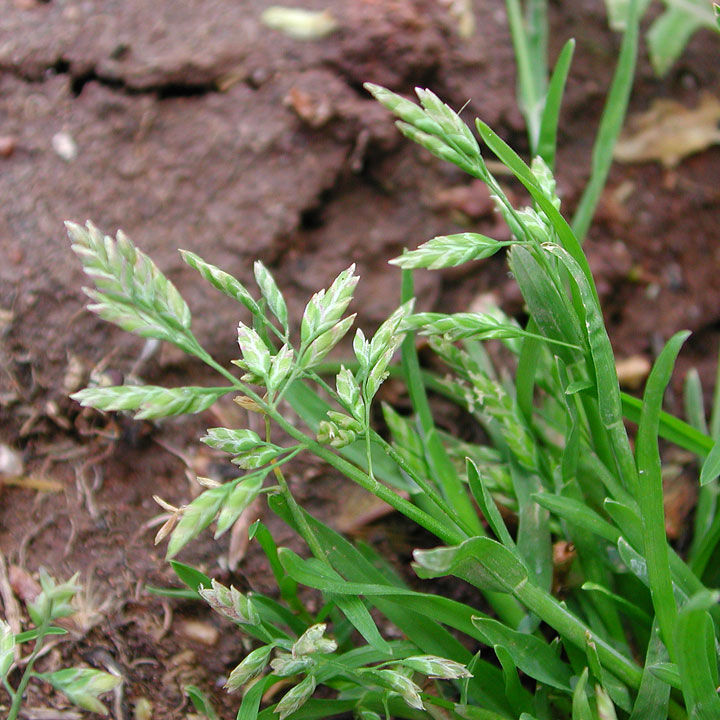|
|
 Max Licher @http://swbiodiversity.org, Usage Rights: Creative Commons Attribution-ShareAlike (CC BY-SA) | | | | | |
|
| | |
Origin: Introduced Season: Cool and Warm
Habitat Description: Thrives in lawns, gardens, cultivated crops, roadsides, open areas, moist waste places.
Plant Communities:Desert Scrub, Semidesert Grasslands, Disturbed Areas
Elevation: 3000 - 5600 feet
Desc:
Flattened stems are spreading or erect. The stems are short, from 2 to 12 inches long, and the plant is characterized by its dense, low clumps.
Identification Notes: Prostrate annual with bright green soft lax blades that have the typical Poa boat-shaped tips; spikelets 3 to 6 flowered; lemmas with a few long hairs, but not webbed at their base.
Grass Type: Annual Rhizomes: N Stolons: Y
Large Dense Clump (> 2 feet): N Bushy (highly branched): Y
Height with Seedheads: Less than 12 inches
Seedhead Structure: Branched - contracted Seedhead Droops: N
Flowering Period: Mar - Aug
Number of Flowers per Spikelet: Multi-flowered Spikelets One-sided: N
Awns: Absent Three Awns: N Awns Bent: N
Flower and Seedhead Notes: Seedheads are pyramidal with spreading branches. The flower head is triangular to egg shaped and it branches more than once, is often pale, and at times, bright green to purplish. 3 to 8 flowers per laterally compressed spikelet.
Blade Hairy:
N
Blade with White Margins:
N
Blade Cross section:
Flat
Blade Notes:
Leaves are bright green, wide, flat and soft with the tip curved and prow-like.
Sheath Hairy:
N
Tuft of Hairs at top of Sheath or Collar:
N
Ligules:
Membranous
Auricles (Ear-like lobes at collar area:
N
Forage Value:
It is one of the sweetest grasses for green fodder, but less useful than hay.
|
|